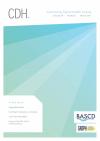Community Dental Health

- Cover Date:
- March 2017
- Print ISSN:
- 0265 539X
- Vol:
- 34
- Issue:
- 1
Urinary fluoride excretion in preschool children after intake of fluoridated milk and use of fluoride-containing toothpaste
Objective: To assess the urinary fluoride excretion in preschool children after drinking fluoridated milk with 0.185 mg F and 0.375 mg F and to study the impact of use of fluoride toothpaste. Basic research design: Double-blind cross-over study. Participants: Nine healthy children, 2.5-4.5 years of age. Intervention: In a randomized order, participants drank 1.5 dl milk once daily for 7 days with no fluoride added (control), 0.185 mg fluoride added and 0.375 mg fluoride added. The experiment was performed twice with (Part I) and without (Part II) parental tooth brushing with 1,000 ppm fluoride toothpaste. The fluoride content in the piped drinking water was 0.5 mg F/L. Main outcome measure: Urinary fluoride excretion. Results: The 24-hour urinary fluoride excretion/kg body weight varied from 0.014 mg F for the placebo intervention and non-fluoride toothpaste to 0.027 mg F for the 0.375 mg intervention with use of 1,000 ppm fluoride toothpaste. The difference compared with the placebo intervention was not statistically significant for any of the interventions when fluoride toothpaste was used (p>0.05) while it was statistically significantly different when non-fluoride toothpaste was used (p<0.05). Conclusions:
All sources of fluoride must be considered when designing community programs. With 0.5 mg F/L in the drinking water and daily use of fluoride toothpaste, most children had a fluoride intake optimal for dental health. In this setting, additional intake of fluoride milk was within safe limits up to 0.185 mg/day while conclusions about the safety of 0.375 mg/day were uncertain.
Key words: caries prevention, children, fluoride excretion, fluoride toothpaste, milk fluoridation, Sweden
doi:10.1922/CDH_3943Norman05
- Article Price
- £15.00
- Institution Article Price
- £
- Page Start
- 27
- Page End
- 31
- Authors
- M. Norman, S. Twetman, A. Hultgren Talvilahti, E. Granström, C. Stecksén-Blicks
Articles from this issue
- Title
- Pg. Start
- Pg. End
- Urinary fluoride excretion in preschool children after intake of fluoridated milk and use of fluoride-containing toothpaste
- 27
- 31
- Using the simplified case mix tool (sCMT) to identify cost in special care dental services to support commissioning
- 56
- 59
- Oral health and oral health behaviours of five-year-old children in the Charedi Orthodox Jewish Community in North London, UK
- 60
- 64
